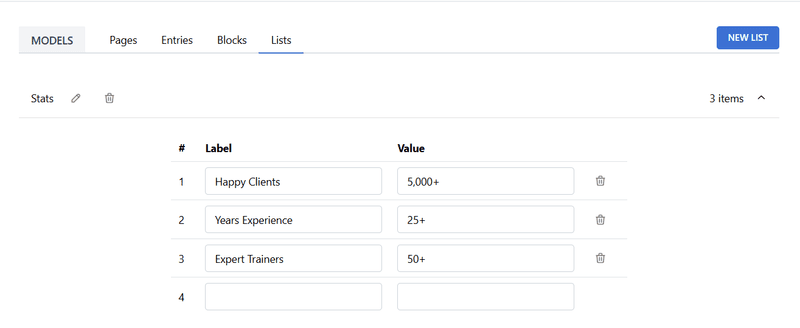Model Content
Overview of Model Content
The Content Model Tab is a central interface within Sleek CMS where users can define and customize the structure of their content. It allows you to create, edit, and manage content models, which serve as blueprints for organizing different types of content on your website. Content models are essential for ensuring consistency and flexibility across pages, entries, blocks, and lists, enabling you to tailor your website’s data architecture to meet specific needs.
Pages

Pages represent the primary building blocks of a website within Sleek CMS. They are customizable entities that users can create to structure their site’s navigation and content, such as homepages, about pages, or blog articles. Each page is associated with a content model (defined in the Content Model Tab) and can include entries, blocks, and lists to populate its content dynamically.
Entries

Entries represent a common layout that can be reused across different pages of your site. They are specific instances of content defined in the Content Model Tab that are available to use as a global object. They can include various field types, such as text, images, links, or numbers, and are used to populate pages, navigation elements, or other sections of a website. For example, an entry might represent a navbar, a product listing section, or a footer section.
Blocks

Blocks represent self-contained pieces of content or functionality, such as hero sections, image carousels, call-to-action sections, or media galleries, defined by a content model (created in the Content Model Tab). They are designed to be embedded within pages, entries, or lists, offering a modular approach to content management. For example, a block might represent a hero banner or a footer section.
Lists

Lists represent a robust mechanism for managing content through a set of key-value pairs. This functionality is designed to organize and present categorized data such as statistics, testimonials, or key features, and is seamlessly integrated into the Model Content tab. By defining lists as collections of key-value pairs, users can create highly customizable and reusable content structures tailored to their website’s specific requirements.